Yunnan cuisine, originating from the southwestern province of Yunnan in China, is a culinary gem celebrated for its diversity, vibrant flavors, and unique ingredients sourced from the region's rich biodiversity. Influenced by its multicultural heritage, Yunnan cuisine harmoniously blends elements of Han Chinese, Bai, Dai, Tibetan, and other ethnic cuisines, resulting in a delightful fusion of tastes and textures. Known for its use of fresh herbs, edible flowers, mushrooms, and unique proteins like insects, Yunnan cuisine offers a gastronomic adventure like no other. From hearty rice noodle soups to fragrant steamed dishes, each bite reflects the province's rich cultural tapestry and natural abundance.
Hot Pot
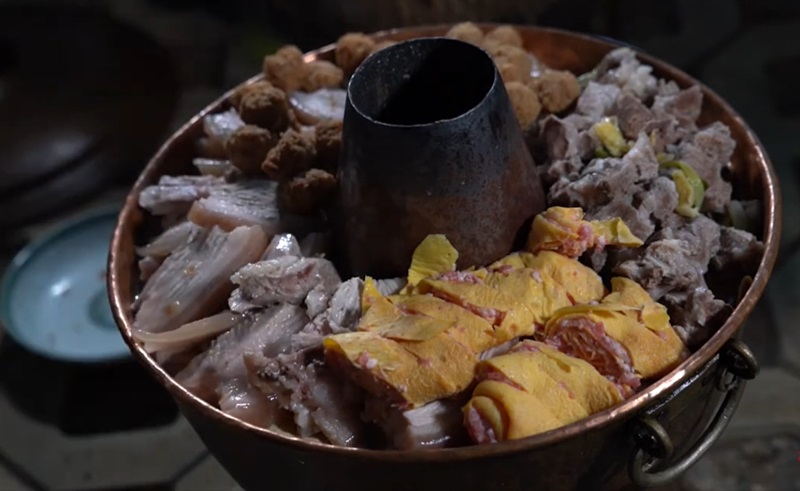
Hot Pot is a delicious broth traditionally served in a large metal pot. The broth is brought to a boil and left simmering for the duration of the meal. Raw ingredients, such as meat and vegetables, are placed into the simmering broth and thus cooked. The cooked pieces are dipped into dipping sauces for additional flavor. Hot pot is considered a main course and is usually served without rice or noodles on the side. Typical hot pot ingredients include thinly sliced meat, leaf vegetables, mushrooms, vermicelli, sliced potatoes, bean products, egg dumplings, tofu, and seafood. Raw ingredients are pre-sliced into thin sections that will cook quickly and consistently in the simmering broth, which is kept at a gentle boiling temperature.
Pu'er Tea

Pu'er Tea is a type of fermented tea traditionally produced in Yunnan Province, China. In the traditional process of Chinese tea production, fermentation, known as 'wet piling,' occurs after the tea leaves have been adequately dried and rolled. Controlled microbial fermentation, coupled with controlled oxidation, takes place, contributing to the development of desired flavors in the tea.
Malatang
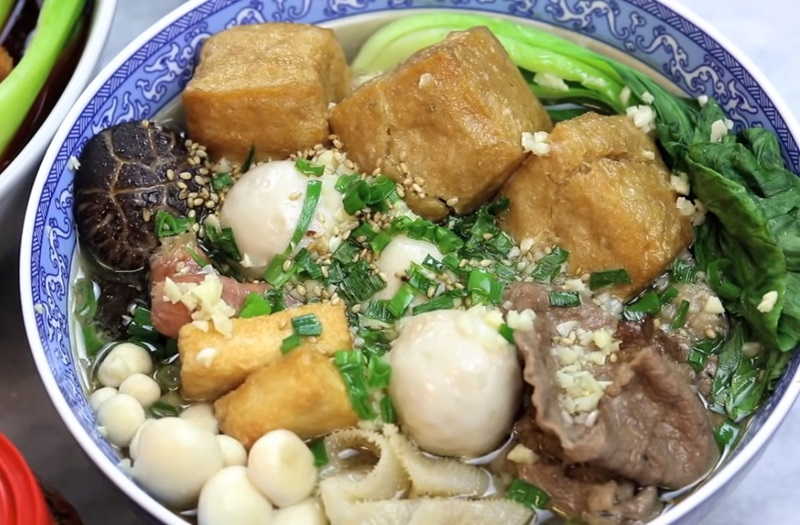
Malatang is a popular Chinese street food. It takes its name from its main component, mala sauce, which is flavored with a combination of Sichuan pepper and dried chilli pepper. The term "mala" denotes the numbing and spicy sensation in the mouth. Typically, a table with a large flat saucepan is set up on the street, featuring various ingredients on skewers cooked in a mildly spicy broth. Customers gather around, selecting items to eat. Due to the diverse array of ingredients, not all are in the saucepan simultaneously, allowing customers to suggest additions. Common ingredients include celtuce, beef, dumplings, lettuce, spinach, lotus root, mushrooms, noodles, pork liver, potato, quail eggs, Chinese yam, tofu, rice cakes, and various meat or fish balls.
Chongqing Hot Pot
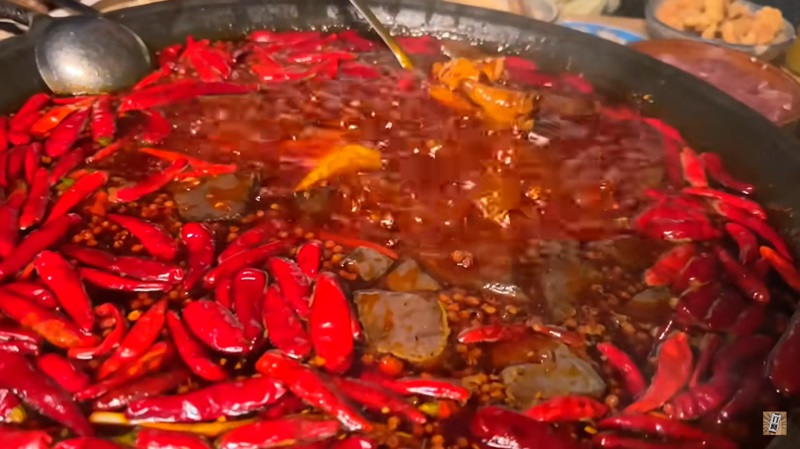
Chongqing Hot Pot is a communal dish where a simmering pot of spicy soup is placed in the center of the table. The soup is infused with a variety of spices such as Sichuan peppercorns, dried chili peppers, and aromatic herbs, giving it a fiery and numbing sensation. The hot pot is then filled with an assortment of fresh ingredients including thinly sliced meats, seafood, mushrooms, tofu, and vegetables. These ingredients are cooked in the boiling soup, absorbing the rich flavors and becoming tender and delicious. To balance the heat, dipping sauces made from soy sauce, garlic, sesame oil, and vinegar are provided. These add an extra layer of complexity to the dish.
Crossing-the-bridge Noodles
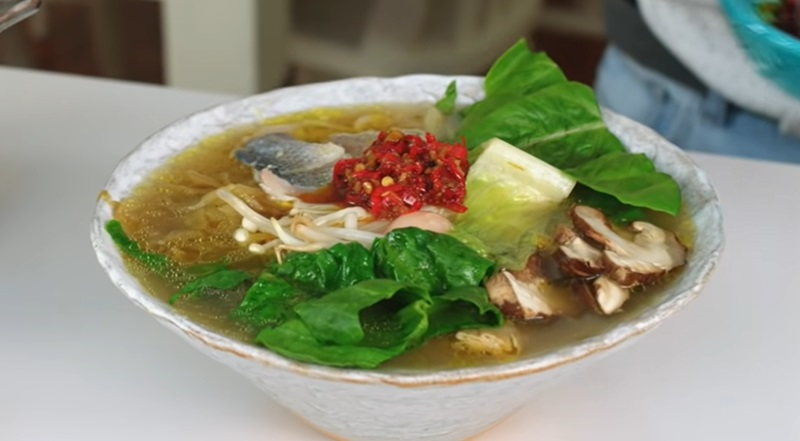
Crossing-the-bridge noodles is a soup-based noodle dish that reflects the unique flavors and culinary traditions of the region. The dish consists of a steaming hot bowl of clear broth served with a variety of toppings and ingredients. The key component is the delicate rice noodles, which are typically cooked separately and added to the broth just before serving. The noodles are exceptionally smooth and silky, providing a delightful texture to the dish. Accompanying the noodles are an assortment of ingredients such as tender slices of chicken or pork, fresh vegetables like bean sprouts and leafy greens, and a medley of aromatic herbs and spices. These ingredients are arranged on a large platter, allowing diners to customize their bowl of noodles according to their preferences. The broth itself is rich and flavorful, often made with a combination of chicken or pork bones, along with various seasonings and herbs. It is carefully poured over the noodles and toppings, creating a tantalizing aroma and infusing the dish with a depth of taste.
Bingfen
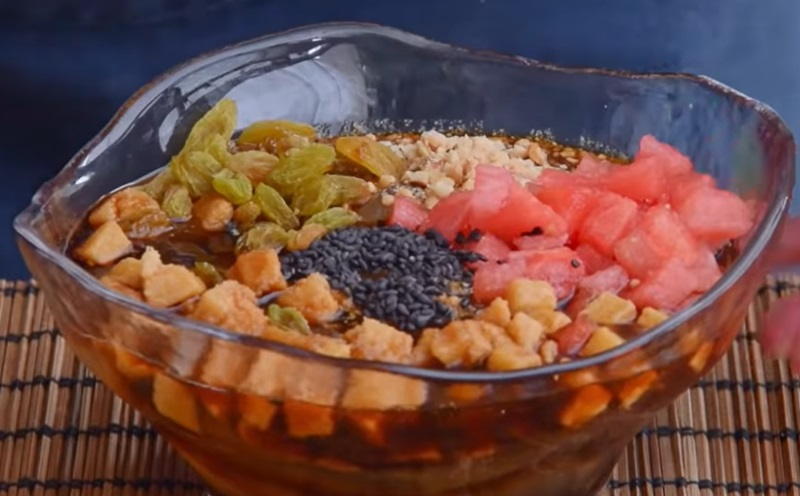
Bingfen, also known as 'ice jelly' or 'crystal jelly', is a Chinese dessert with a jelly-like texture derived from pectin. The pectin is extracted from shoofly plant seeds (Nicandra physalodes), scrubbed and strained into a bowl of mineral water with slaked lime. After resting, the pectin semi-solidifies into a jelly. Bingfen's light and refreshing flavor makes it a popular choice during the summertime. As it is made from plant seeds, it is often considered a healthier alternative to sugar-filled treats.
Mixian
-1703658907.jpg)
Mixian is a type of rice noodle that originates from the Yunnan Province in China. Unlike many other noodles, Mixian is crafted from regular non-glutinous rice and is commonly found in its fresh form rather than being dried. The noodle is enjoyed in diverse ways, either immersed in a flavorful broth or quickly stir-fried. Stir-frying is a swift cooking method, particularly popular in the evenings, and is a common sight at roadside barbecue-style stalls across Yunnan. Ingredients such as egg, tomato, meat, spring onion, and chili are frequently incorporated into the stir-fried version. For those opting for the broth-based preparation, the condiments can vary widely. They may include chicken powder or essence, chili pepper, chrysanthemum flowers, coriander, mint, garlic, ginger, pepper, salt, sesame oil, Sichuan pepper oil, soy sauce, spring onion, suan cai, pickled or preserved vegetables, tomato, vinegar, and wood ear mushrooms.
Lufu
-1703659992.jpg)
Lufu is a variety of fermented bean curd originating from Yunnan Province in Southwest China. With a reddish-yellow hue, Lufu boasts a soft texture and a savory taste. It serves as a condiment for kăo ĕrkuāi or is transformed into a sauce for Yunnan-style barbecue or stinky tofu.
Rushan Cheese
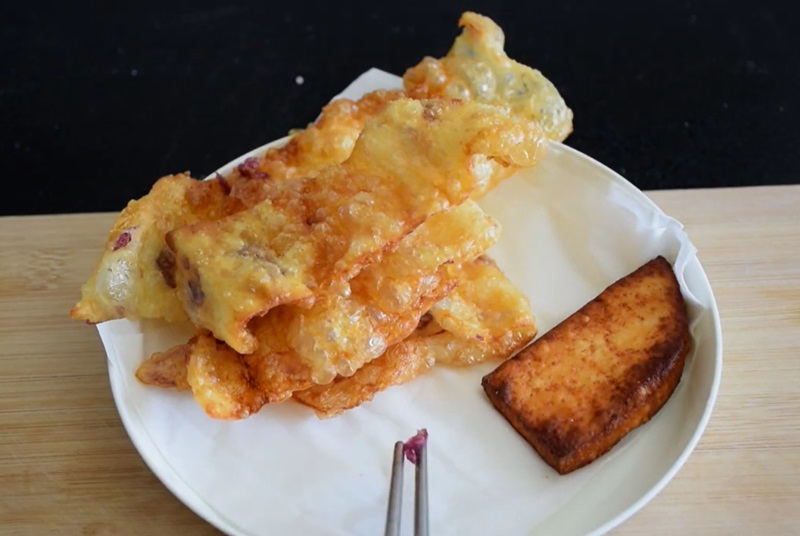
Rushan is a type of cow's milk cheese originating from Yunnan, China, traditionally crafted by the Bai people. The cheese-making process involves pulling and stretching freshly made cow's milk curds into thin sheets, which are then wrapped around bamboo sticks and hung to dry until they achieve a yellow, leathery texture. Rushan is enjoyed in various ways, including grilling over charcoal to warm and soften the milk fan. Traditionally, the interior is adorned with rose petal jam. Alternatively, it can be deep-fried to a golden, crisp perfection. When grilled, it is often spread with sweet condiments and rolled around a stick, resembling an ice pop. Popular toppings include sweetened condensed milk, rose petal-infused honey, chocolate syrup, and fruit preserves.
Rubing

Rubing is a solid, acid-set, non-melting farmer cheese produced in China's Yunnan Province by the Bai and Sani minorities. The cheese-making process involves combining heated goat's milk with a souring agent, traditionally a mixture known as naiteng. Rubing is commonly steamed with local ham or salt beef, occasionally pan-fried with salt and chili. It can also be stir-fried with vegetables, typically a combination of broccoli and carrot, and pan-fried with alternative seasonings like dry chili powder, salt, and Sichuan pepper powder.
Erkuai
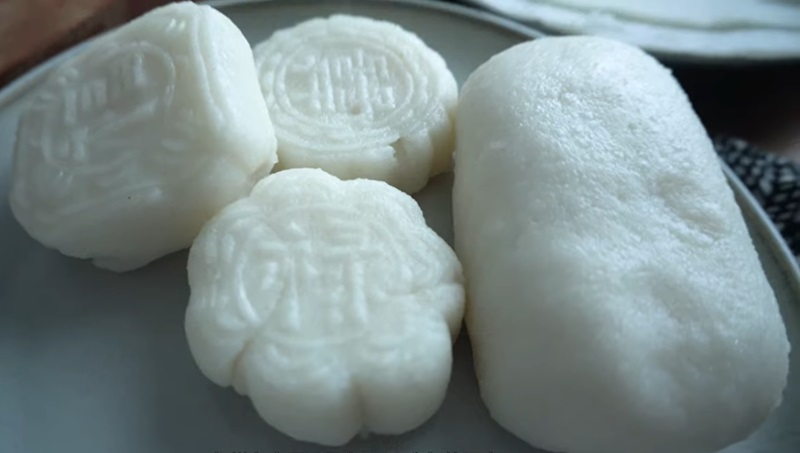
Erkuai is made from glutinous rice, which is soaked, steamed, and then mashed into dough-like consistency. The dough is then shaped into flat, round cakes and pan-fried until crispy on the outside. The cakes are soft and chewy on the inside, creating a delightful texture contrast. Erkuai can be enjoyed in various ways. It is often served as a street food snack, topped with various ingredients such as shredded pork, pickled vegetables, chili sauce, and peanuts.
Xuanwei Ham

Xuanwei ham is a famous cured ham that originated in Xuanwei County, Yunnan Province, China. It is renowned for its exquisite taste and delicate texture. To make Xuanwei ham, selected pork legs are first carefully cured with a mixture of salt, spices, and other ingredients. The curing process takes several months, allowing the flavors to develop and the meat to become tender. The ham is then air-dried and smoked using local pine wood, which imparts a distinctive aroma. The resulting Xuanwei ham has a reddish-brown color and a marbled appearance.
Xidoufen
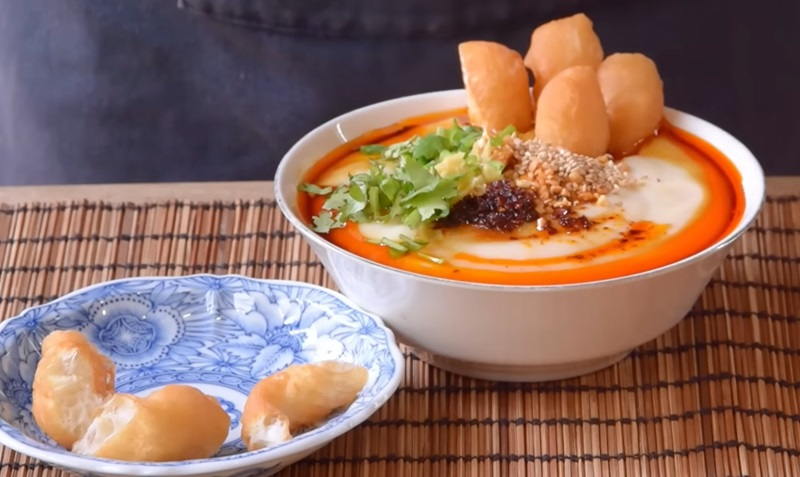
Xidoufen is a well-loved Chinese soup originating from Yunnan province, crafted by boiling pea meal. It is infused with flavors of crushed garlic, ginger, coriander, spring onion, dry chili flakes, and Sichuan pepper oil. Typically, it is enjoyed alongside deep-fried youtiao or Chinese flatbreads, with 'cong you bing' being a popular choice.
Boluo Fan
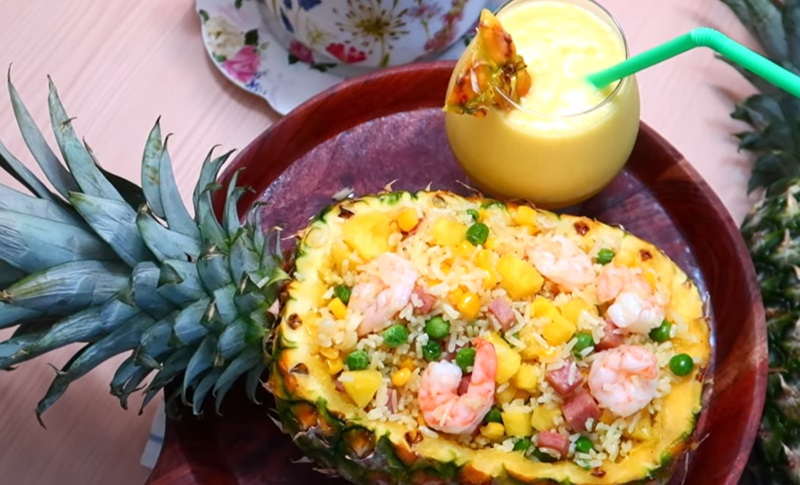
Boluo Fan, also known as pineapple rice, is a delightful dish originating from Yunnan. China. The rice, typically a combination of purple and white varieties, undergoes an overnight soaking before being steamed for about an hour. The preparation involves hollowing out a ripe pineapple by either slicing off the top and removing the flesh or cutting it lengthwise into two halves. The pineapple flesh is then diced into small cubes. The steamed glutinous rice is combined with the pineapple cubes, raisins, rock sugar, a dash of salt, coconut milk, and sliced almonds. This mixture is filled back into the hollowed-out pineapple and steamed for an additional 20 minutes, creating a flavorful and visually appealing dish.




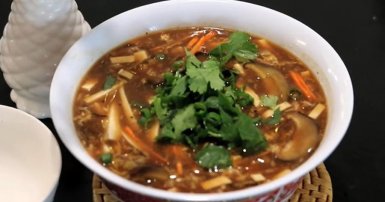
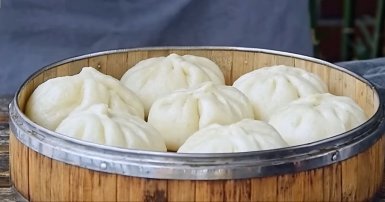
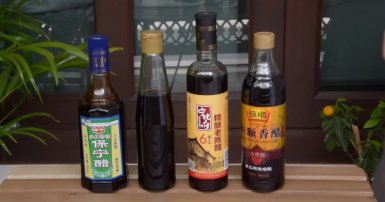
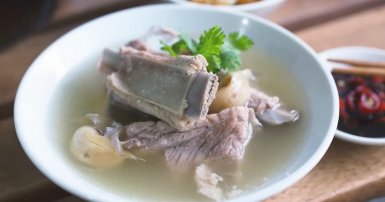


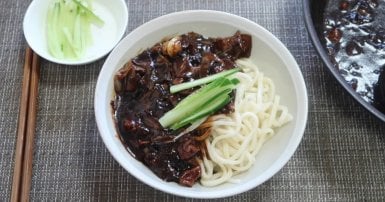


-1709813013.jpg)


